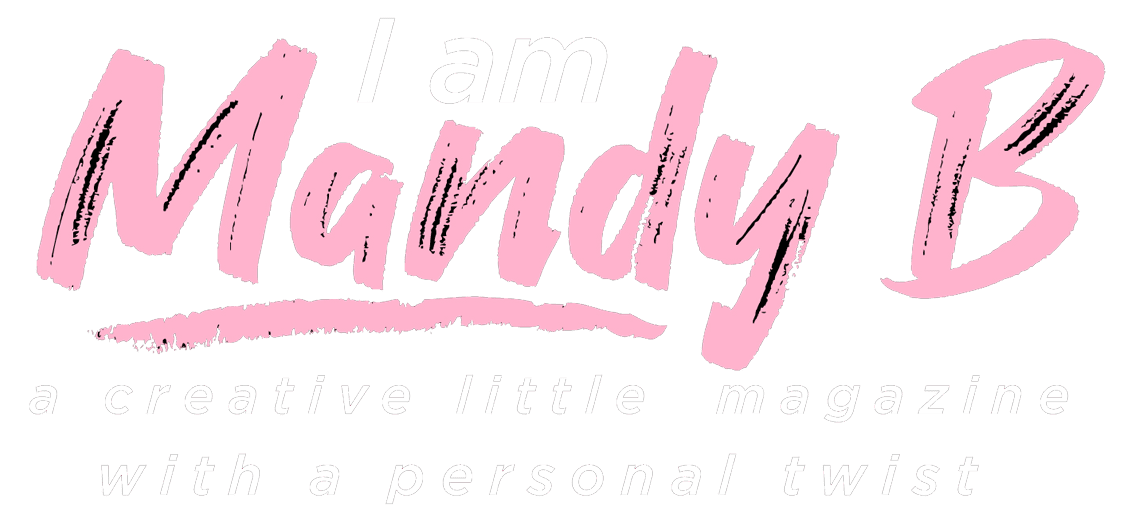Over the past few decades, football and fashion have become increasingly intertwined. What players wear off the field is now almost as important as what they wear on it. Fashion has always played a role in football, but the connections between the two have recently deepened and expanded into new areas.
This article will examine the growing relationship between football and fashion. It will look at how football influences fashion trends and popular culture. It will also explore how fashion is becoming ingrained in football through branding partnerships and players’ styles.
By the end, you will understand how football and fashion have developed an increasingly symbiotic relationship that shows no signs of diminishing. Football needs style to enhance its image and appeal, while technique relies on football for inspiration and new markets.
The History of Fashion in Football
Football has always had an element of fashion, right from the sport’s origins in the 19th century. Early football kits reflected the clothing styles of the Victorian era, with knitted wool tops, knickerbockers, and heavy leather boots.
As the game transitioned into the 20th century, kits evolved with broader fashion trends. Shorts got shorter, collar styles changed, and kits became made from synthetic fabrics rather than wool. After the Second World War, gears became more colorful, mirroring the rise of teenage culture.
In the 1960s, football was closely linked to youth fashion trends like mod culture and music bands like The Beatles. Stars like George Best shaped and reflected these fashions, helping birth the idea of footballers as style icons.
The 1970s saw kits get tighter and shorter, showcasing athletic physiques. Designs also started to become more daring, with bold geometric patterns or flashes of color. By the 1980s and 90s, kits were sleeveless, and urban streetwear heavily influenced sportswear.
So, while today’s seamless relationship between football and fashion may seem new, the origins stretch back over a century. Footballers have long been public figures who impact and are impacted by society’s trends.
Footballers as Fashion Icons
With the rise of celebrity culture and social media over the last 20 years, footballers have become full-blown fashion icons and trendsetters. Stars like David Beckham, Cristiano Ronaldo, and Neymar have massive influence over what their fans wear.
Beckham, in particular, is credited with making it excellent for men to care about fashion and grooming. His many hairstyle changes sparked major trends, while his off-duty style inspired men globally. Brands would ask him to wear their clothes simply for publicity.
Today, elite footballers like Paul Pogba, Héctor Bellerín, and Serge Gnabry attend fashion shows decked in designer gear. Millions follow their style on Instagram. Footballers have become just as much fashion influencers as models or actors.
But female footballers are also becoming fashion icons. Stars like Alex Morgan, Lindsey Horan, and Megan Rapinoe are equally bold with their style and have substantial social media followings. Sponsorship deals with beauty brands are helping enhance a glamorous image.
Of course, fashion is a crucial way footballers express their personality off the pitch. But make no mistake – for the top stars, style is also big business and a vital source of income alongside endorsements.
Clubs and Fashion Houses Forming Partnerships
It’s not just individual players linking up with fashion brands but clubs. These partnerships between football teams and fashion labels significantly deepen industry ties.
A pioneer was Juventus, who in 2015 launched a collaboration with Italian fashion house Pal Zileri. Players wore tailored Pal Zileri suits on big matchdays, while the brand designed formalwear for the club.
Other clubs soon followed. AS Roma partnered with Japanese streetwear label A-Cold-Wall* to launch a fashion collection inspired by the club’s colors and symbols. Real Madrid collaborated with British brand Thom Browne on bright casual clothing.
From a brand perspective, these partnerships give fashion houses star power and global reach. For clubs, it allows monetizing their brand in new ways while strengthening their fashion credentials. It’s a mutually beneficial strategy.
These collaborations also show that football clubs see no distinction between on-pitch and off-pitch styles. Looking good matters from head to toe. Fashion is not an optional extra but an integral part of a club’s identity.
Football Influencing Mainstream Fashion Trends
Football culture and style have also increasingly inspired trends in the mass fashion market – what regular people wear daily. Sportswear brands like Adidas and Nike use footballers in their marketing for performance gear, lifestyle, and streetwear.
Athleisure – casual sports clothing worn socially – is hugely popular right now. Sports jerseys, tracksuits, trainers, and caps have entered the fashion mainstream. Football is arguably the driver behind fashion casualization and activewear’s acceptance anytime.
Upscale brands have also taken inspiration from football. Balenciaga, Louis Vuitton, and Valentino designers have incorporated football shapes, stripes, and logos into their collections. Football is now a standard theme across menswear and streetwear.
Even in formal settings, the suited look of managers like Pep Guardiola has influenced trends. His turtleneck and jacket combination sparked many copycats. Jose Mourinho’s ‘full kit’ look also inspired individuals to wear shirts and ties matching their teams’ colors.
Football has undoubtedly shaped various fashion trends. Its impact and cool factor make sense as the world’s most popular sport. Football style has mass appeal across different groups, price points, and demographics.
Footballers Launching Fashion Labels
Capitalizing on their fashion icon status, many top footballers have gone a step further by launching their clothing labels. Being able to design, model, and endorse their brand provides enormous opportunities.
David Beckham is arguably the most successful example. His menswear label Kent & Curwen, launched in 2015, uses classic British tailoring updated with modern details. Sales have exceeded expectations, earning over £70 million annually.
Cristiano Ronaldo created his own CR7 fashion line in 2006, which includes clothes, shoes, fragrances, and accessories. It has grown into one of the best-selling celebrity brands in the world, generating over €30 million annually. He has complete control over the brand image.
Other players with fashion labels include Lionel Messi (Messi Store), Eden Hazard (H by Eden Hazard), and Raheem Sterling (Munchies). These allow for expressing a personal style beyond just endorsement deals with more prominent brands.
Owning a fashion line provides players with business opportunities after retiring. But the rise of ‘player brands’ also reflects football’s position at the heart of the fashion world. On and off the pitch, style matters.
The Role of Stylists and Image Consultants
Nearly all elite footballers now work with stylists and image consultants to keep up in the fashion world. These experts in branding and style are crucial for footballers building their public image.
Stylists advise on what clothes suit players’ body shape and skin tone. They source designer outfits for photo shoots, commercial engagements, and public appearances. At events like Fashion Week, stylists assemble head-to-toe looks.
Image consultants take a broader view of crafting a player’s image. They work on branding, social media, and broader business opportunities – with fashion being a key focus. Footballers must now see themselves as lifestyle brands beyond just sporting talent.
Cristiano Ronaldo’s stylist for the past decade has been Karina Leprevost, who sources his matchday and nightclub looks. Raheem Sterling works with stylist Will Scally, who helped transform his public image. Alex Morgan uses stylist Law Roach to get the red carpet ready.
So, while football and fashion overlap, stylists are the glue binding them together. Players need help navigating the complex fashion world and translating their style into effective brand strategy. It’s a carefully crafted process.
Footballers as Brand Ambassadors and Models
Another sign that football and fashion continually overlap is that players are increasingly becoming brand ambassadors for fashion houses. The trend shows how their marketing power goes well beyond just sports brands.
David Beckham has a long-standing partnership with H&M spanning over a decade. He has fronted campaigns for their Modern Essentials range and launched collections with his name. Beckham is their most famous ambassador globally.
Neymar signed as brand ambassador for Diesel in 2020, fronting a denim campaign for the Italian brand. He has worn Diesel outfits extensively both on and off the pitch since. The five-year deal could earn him up to €15 million.
Female players are getting similar opportunities. Alex Morgan has represented brands like Maybelline, Nike, and Secret. Megan Rapinoe has become an ambassador for Loewe, fronting a campaign for the Spanish luxury house. She also signed a deal to endorse Victoria’s Secret in 2019.
Fashion brands tap into their audiences and favorable image by associating with football stars. Meanwhile, modeling elevates footballers as style icons at the cutting edge of the industry. The partnerships are beneficial across the board.
Fashion Taking Inspiration from Football Culture
While football impacts fashion, the reverse dynamic is also increasingly true. Fashion regularly finds inspiration in football culture, style, and icons. Football remains an endless source of ideas.
A key example is logomania – using brand names and logos in fashion design. This hugely popular trend originates in football merch like team jerseys covered in sponsors, brands, and badges. Fashion houses took note.
The casual terrace culture of football fans has also been embraced by high fashion. Designers incorporate football supporters’ practical, comfortable styles like tracksuits, anoraks, trainers, and polo shirts – often with luxury materials or details.
Collections even directly reference famous football moments and personalities. Moschino’s capsule collection in 2019 paid homage to the 1990s English Premier League with irreverent spins on traditional club designs.
So, while football inspires the mass market, it has become a staple theme in elite fashion. Designers continuously find new ways to incorporate football’s symbols, icons, and cultural impact into their work. The sport and activity around it is a creative goldmine.
Important Fashion Moments in Football History
Looking back, some pivotal moments showed football and fashion firmly merging. While the links stretch back a century, key events cemented football’s place at the high fashion table.
In the 1960s, footballer George Best brought a rock star edge on and off the pitch for Manchester United. His slim fits, sideburns, and playboy persona made him an enduring fashion icon.
When David Beckham met Victoria Adams of the Spice Girls in 1997, it created a mega-watt celebrity power couple and made Beckham a household name globally. This propelled his fashion icon status.
The 1998 World Cup in France saw players make a coordinated effort to look stylish, inspired by the hosting nation’s fashion reputation. Roberto Carlos started the tournament with a buzzcut hair design.
When David Beckham wore a sarong in 1998, it was groundbreaking for a footballer embracing a non-traditional garment. It signaled male fashion norms changing.
2013, the first footballer attended the Met Gala – the most prestigious fashion event. Cristiano Ronaldo wore a bold tartan kilt by Burberry to walk the red carpet.
Conclusion
In summary, football and fashion have developed an increasingly symbiotic relationship spanning business partnerships, branding opportunities, cultural inspiration, and shared icons.
Football needs fashion to boost its appeal, make stars more relatable, and tap into new revenue streams. Fashion turns to football for creative influence, celebrity ambassadors, and reaching new demographics.
Key drivers have been players transitioning into style icons, clubs linking up with fashion houses, and trends inspired by football culture elements. Boundaries between sport and fashion are blurring.
This deep integration looks set to continue growing. Football and fashion remain the ultimate dream team – each providing what the other needs to stay fresh, generate income, and capture fans’ imaginations. Their futures are tied tightly together.




